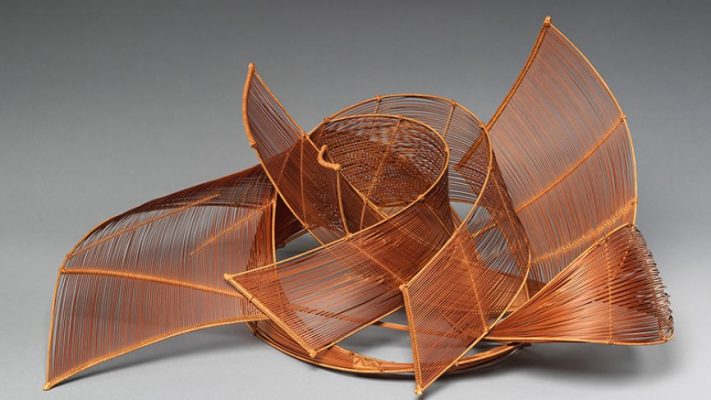Tide by Fujitsuka Shosei; Photo Courtesy: Fujitsuka Shosei
With this exhibition, what comes to the foreground is the difference in viewing objects. Objects that for hundreds of years were considered simple, everyday utensils now have a place at The Metropolitan Museum of Art in New York. These refined bamboo vessels have been made using local traditions and techniques passed down from generation to generation. It was around the 19th century that bamboo craftsmanship began to be recognised as one of the traditional Japanese decorative arts, and later as an art form.

Flow by Yamaguchi Ryuun; Photo Courtesy: Yamaguchi Ryuun
This traveling exhibition is devoted to recognising masterworks of Japanese bamboo art and has more than 90 objects on display, featuring work by six artists who have been designated as ‘Living National Treasures’. A monumental site specific installation by Tanabe Chikuunsai IV, highlights key stages in the modern history of Japanese bamboo art. The objects on display are from The Diane and Arthur Abbey Collection and is one of the finest collections of Japanese bamboo sculptures; 70 pieces—some of which have never been seen before—from the collection have been promised as gifts to The Met.

Dance by Honda Syōryū; Photo Courtesy: Honda Syōryū
Organised by geography—Kansai, Kantō, and Kyūshū—the exhibition features masterworks by artists of the Meiji (1868–1912) and Taishō (1912–1926) periods. The show will also feature pieces by modern bamboo artists. The works will be augmented by a selection of paintings and decorative arts exploring related themes, such as the four seasons, floral compositions (ikebana), and the tea ceremony. The exhibition also includes work by Iizuka Rōkansai, who has created innovative works that became the foundation for contemporary bamboo art.
Highlights of the exhibition includes a basket for transporting the sencha tea ceremony utensils (1877–80s), by Hayakawa Shōkosai I (1815–1897. Moon reflected on water (1929), by Sakaguchi Sōunsai (1899–1967), which is the first bamboo work accepted into a public, government-sponsored art exhibition, in 1929. An offering or fruit tray made of smoked timber bamboo is an early work by Shōno Shōunsai (1904–1974), who, in 1967, became the first Living National Treasure of bamboo art. A conceptual piece, Autumn breeze (2014) by Uematsu Chikuyū and Flowing pattern (2014) by Honma Hideaki, are award-winning pieces that incorporate a flexible bamboo species called men’yadake.The exhibition is on display from June 13, 2017 to February 4, 2018 at The Metropolitan Museum of Art, Fifth Avenue, Galleries 224–232, Arts of Japan, The Sackler Wing Galleries.

